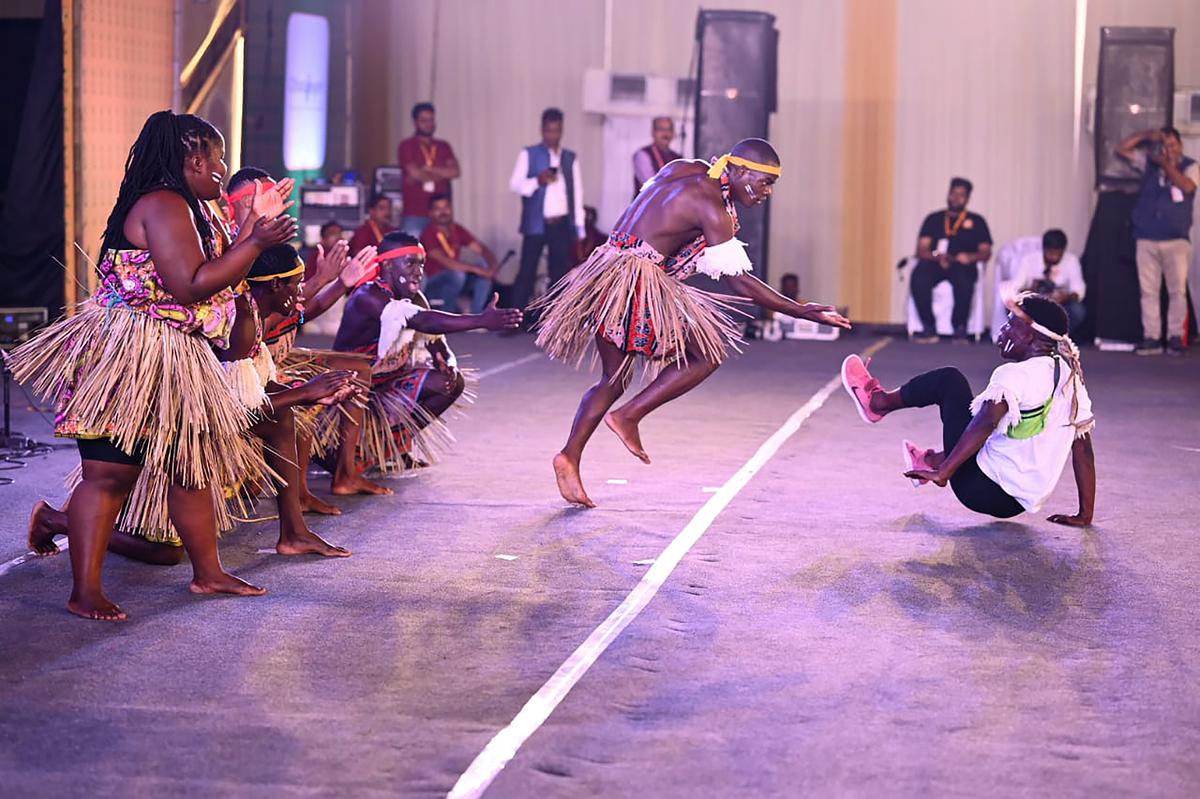
World’s rhythms, a delectable India at Chhattisgarh’s National Tribal Dance Festival
The Hindu
Artists from across the world take part in the event in Chhattisgarh showcasing their talent and getting a glimpse of diverse Indian culture
From what looks like an elaborate spread served to this bunch of teenagers from north Sumatra, they pick chapatti — the humble Indian flatbread — as their favourite. For all the similarities between Indian and Indonesian cuisine, wheat is a rarity back home, and they would like to indulge in this local staple in the limited window on offer, they say.
Seated a few tables away are Marco Pandelich (25) and his troupe from Serbia. For this group — all members of the Talija Art Company who have been performing together for the past 20 years and have travelled across the globe — the standout part about India is the sheer number of people who turned out to watch their dance performance here.
They were among the representatives from 10 countries sharing their experiences in India while they had converged in Raipur for the National Tribal Dance Festival. The third edition of the three-day event that the Chhattisgarh government claims is one of its kind anywhere in the world, concluded on Thursday.
While teams from all over the country competed in the festival, the international contingent, comprising artists from Mozambique, Mongolia, Togo, Russia, Indonesia, Maldives, Serbia, New Zealand, Rwanda and Egypt, were invited to add an international flavour to an event, that Chhattisgarh Chief Minister Bhupesh Baghel said, was aimed at uniting the world for the rights of tribals.
While the crowd enjoyed their performances, the dance troupes also described the experience as enriching, getting a glimpse of diverse Indian culture as well as fellow international participants.
Shahira Nafisha, a 15-year-old from Indonesia, said her group was formed combining students from different schools in her region and they had been practising for a month to improve coordination. Their group leader Dewi Marlina Marv who has been to India before, said that on their way to Raipur, the troupe’s members had many questions about the country. “They asked me questions like ‘Is dance mandatory for girls in India’ or ‘what are the various dance forms they have’ or ‘how is the food there’. I was pleased to share whatever I knew.
Language was a barrier for many contingents, such as the ones from Indonesia and Mongolia, but using a handy mix of interpreters and modern tools such as Google Translate, they managed their interactions with media and others. For those like Olivier Agbemedji (29) from Togo, the school system of the former French colony that “teaches seven languages, four of them European”, life as a globetrotter becomes much easier.













